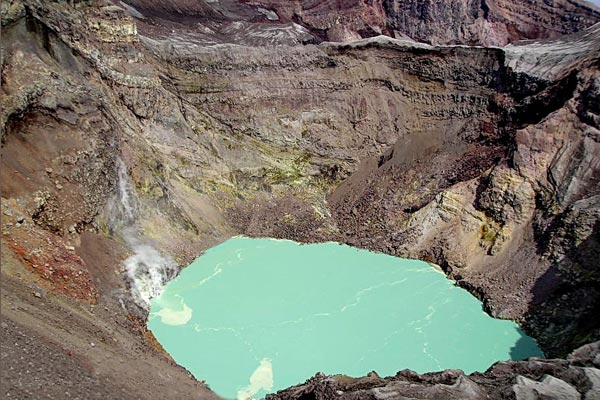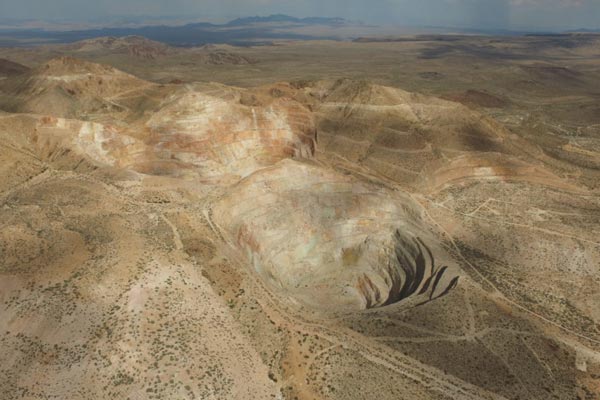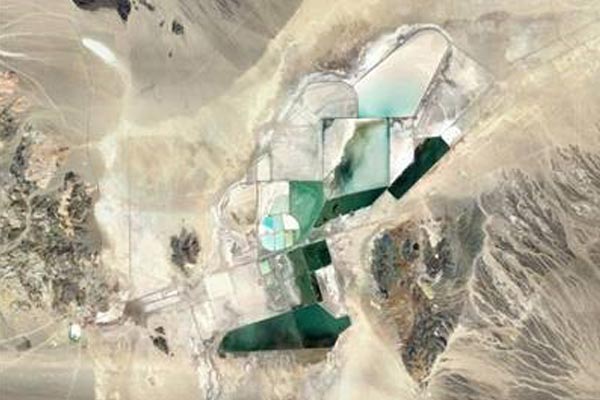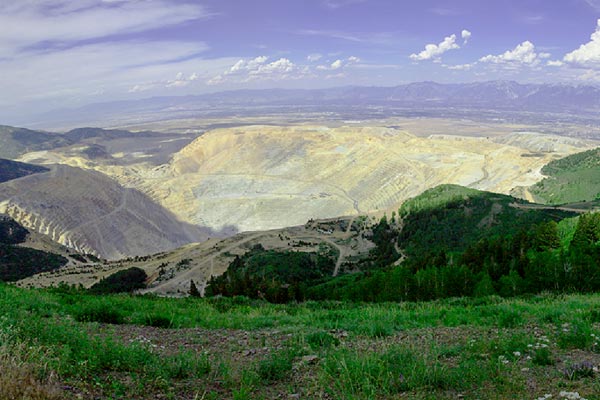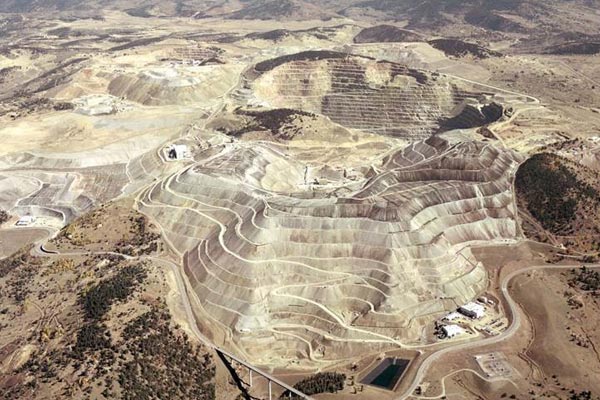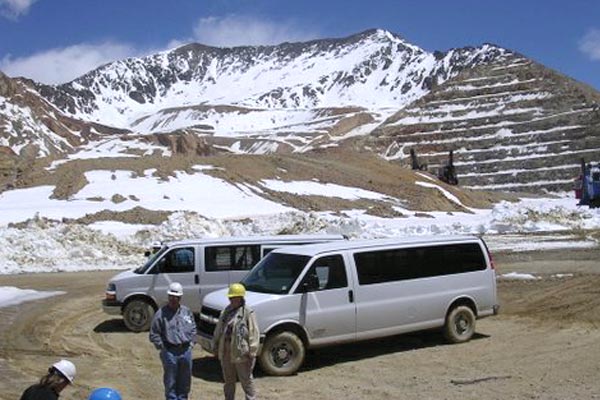Field Trips
Pre-Conference Field Trips
Post-Conference Field Trips
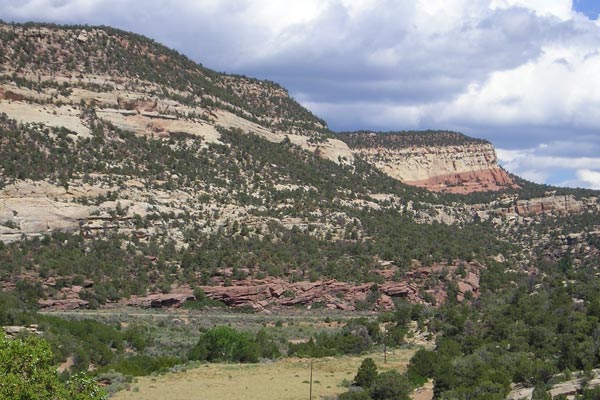
FT06 - Paradox Basin Fluids and Colorado Plateau Copper, Uranium, and Vanadium Deposits
- SOLD OUT
- Details
Field Trip Details
FT01 - Central and South Kamchatka Mining Districts, Far East of Russia
Date: September 13-19, 2018
Location: Departing from and returning to Petropavlovsk-Kamchatsky, Russia
Leader: Daria S. Bukhanova*
Kamchatka Peninsula is located in the northeastern section of the Pacific Ring of Fire. There are 31 active volcanoes and more than 150 groups of hot springs, countless boiling mud cauldrons, fumaroles, and other forms of volcanic activity.
This is a geologically dynamic area with highly prospective mining districts for the discovery of Cu-Au-Mo porphyry, Au-Ag epithermal deposits. The field trip will provide the opportunity to visit the Central Kamchatka mining district with the Shanuch Ni-Cu-Co Mine and Kirganik Cu-Au porphyry deposit (a greenfields exploration project). The trip also includes a visit to the South Kamchatka mining district, which is surrounded by active volcanoes and hydrothermal systems. It hosts the Mutnovskoe and Rodnikovoe Au-Ag low-sulfidation deposits, Mutnovsky and Gorely active volcanoes (a crater visit is included), the Mutnovsky Geothermal Power Plant, and several groups of hot springs (Dachniy, Vilyuchinskie and Verkhne Paratunskie).
*Field trip organizer.
Attendee Maximum: 20
-
SOLD OUT
- Itinerary
FT02 - Rare Earth and Precious Metal Systems of the Mojave Desert Region
Date: September 17-22, 2018
Location: Departing from and returning to the Las Vegas, NV, USA
Leaders: William X. Chávez, Jr.*, Erich U. Petersen
This field trip emphasizes the exploration geology and geochemistry of Au-Ag epithermal systems of the western Basin-and-Range Province and adjacent Mojave Block; we will also discuss and have a planned visit to the Mesoproterozoic-age (1.38Ga) Mountain Pass Carbonatite complex. In-the-field observations and discussions of the geochemistry of epithermal systems, complemented by the use of activity diagrams to explain alteration-mineralization assemblages, form the basis for this practical trip. Visits to operating mines and prospects will give participants the opportunity to see hydrothermal systems from various exposure levels. Evening “take-away” sessions allow participants to discuss their observations in a collective forum, adding to the overall learning experience.
*Field trip organizer.
Attendee Maximum: 20
FT03 - Lithium and Gold Associated with Rhyolites
Date: September 18-21, 2018
Location: Departing from and returning to Reno, NV, USA with three nights in Tonopah, NV
Leaders: Ruth A. Carraher, Jonathan G. Price*, Ted Wilton
The field trip will examine active mines and exploration projects, geochemical and geophysical data, and tectonic setting to address a series of questions about lithium and gold deposits. What is the relation of magma chemistry to mineralization? Is melting of peculiar crust necessary? How do lithium-rich brines and lithium-rich clay deposits form? What are the roles of meteoric water and hydrothermal fluids in the formation of the lithium deposits? How does eruption of tuff impact potential gold mineralization? How important is tectonic setting to the development of world-class lithium and gold deposits? What are the best guides for exploration?
*Field trip organizer.
Attendee Maximum: 27
-
SOLD OUT
- Itinerary
FT04 - Uncovering the Bingham and Stockton Cu-Mo-Au Porphyries
Date: September 20-22, 2018
Location: Departing from and returning to Salt Lake City, UT, USA
Leaders: Rudy Ganske, Kitty Gundy*, Ken Krahulec
The plan for this field trip is a morning visit to the Bingham Canyon mine that will include the east waste rock expansion project and the Manefay scarp. We will make 2-3 stops in the pit followed by a presentation in the 3D room. The second part of the day will be a trip to look from an exploration prospective at the mineral occurrences and alteration surrounding the unmined Stockton Porphyry Cu system 17km west of the Bingham Canyon Mine. This field trip would be of benefit for those wishing to view a highly developed Cu-Au-Mo porphyry system along with an exploration perspective from a buried porphyry system (Stockton).
*Field trip organizer.
Attendee Maximum: 20
-
SOLD OUT
- Itinerary
FT05 - Cripple Creek and Victor Mines
Date: September 21, 2018
Location: Departing from and returning to Keystone, CO, USA
Leader: Douglas White*
The Cripple Creek mining district, a worldclass district located 20 miles west of Colorado Springs, Colorado, has produced over 25 Moz of gold (750 tonnes). Mineralization is hosted in a Tertiaryage alkaline volcanic/diatreme complex. Country rocks surrounding the volcanic diatreme are composed of Proterozoic-age Precambrian granites and metamorphic units. Gold mineralization within the Cripple Creek district occurs in two principal styles, although they are commonly overlapping: (1) broad zones of low-grade, gold-pyrite and telluride mineralization, which is microfracture-controlled and disseminated, and (2) as fracture zones containing highgrade, gold-silver tellurides. Regional and district geology will be discussed during the field trip.
*Field trip organizer.
Attendee Maximum: 25
-
SOLD OUT
- Itinerary
FT06 - Paradox Basin Fluids and Colorado Plateau Copper, Uranium, and Vanadium Deposits
Date: September 25-28, 2018
Location: Departing from and returning to Keystone, CO, USA
Leaders: Isabel Barton, Mark Barton, Jon P. Thorson*
The evaporitic Pennsylvanian Paradox Basin has a long history of generation of acidic bleaching fluids associated with petroleum systems. These fluids have bleached large areas of permeable sandstone on the Colorado Plateau, and bleaching alteration prepared the host rock to trap copper from metal-bearing brines that entered the rocks later and created disseminated Cu(+Ag) deposits in bleached sandstone. This trip will explore the geological, geochemical, and timing relationships among multiple types of basinal fluids and the widespread copper and U+V mineralization in the Uravan mineral belt and Lisbon uranium district, supported by current research results and grants from Keck Foundation and National Science Foundation.
*Field trip organizer.
Attendee Maximum: 20
-
SOLD OUT
- Itinerary
FT07 - Colorado Porphyry-Molybdenum Deposits and Leadville District
Date: September 26-28, 2018
Location: Departing from and returning to Keystone, CO, USA each day
Leaders: Eric Seedorff, Ralph Stegen*, Tommy Thompson
Visit the world-class porphyry Mo deposits at Climax and Henderson (Freeport-McMoRan Copper & Gold) and the carbonate-hosted Ag-Zn-Pb manto deposits at Leadville. The Climax and Henderson deposits have been the source of leading research in porphyry Mo deposits and development of exploration methods. The Leadville district is noted for its long history of production, research on carbonate-hosted Ag-Zn-Pb-(Au) deposits, and the founding of the Guggenheim mining fortune including the formation of ASARCO, Inc. An all-day visit to each of the districts will include surface tours and examination of drill core from the Climax and Henderson deposits, then numerous district stops at Leadville, including a visit to the mining museum.
Two overnight stays in Keystone will be attendee's responsibility. *Field trip organizer.
Attendee Maximum: 25
-
SOLD OUT
- Itinerary
FT01 - Central and South Kamchatka Mining Districts, Far East of Russia
Date: September 13-19, 2018
Location: Departing from and returning to Petropavlovsk-Kamchatsky, Russia
Leader: Daria S. Bukhanova*
Kamchatka Peninsula is located in the northeastern section of the Pacific Ring of Fire. There are 31 active volcanoes and more than 150 groups of hot springs, countless boiling mud cauldrons, fumaroles, and other forms of volcanic activity.
This is a geologically dynamic area with highly prospective mining districts for the discovery of Cu-Au-Mo porphyry, Au-Ag epithermal deposits. The field trip will provide the opportunity to visit the Central Kamchatka mining district with the Shanuch Ni-Cu-Co Mine and Kirganik Cu-Au porphyry deposit (a greenfields exploration project). The trip also includes a visit to the South Kamchatka mining district, which is surrounded by active volcanoes and hydrothermal systems. It hosts the Mutnovskoe and Rodnikovoe Au-Ag low-sulfidation deposits, Mutnovsky and Gorely active volcanoes (a crater visit is included), the Mutnovsky Geothermal Power Plant, and several groups of hot springs (Dachniy, Vilyuchinskie and Verkhne Paratunskie).
*Field trip organizer.
Attendee Maximum: 20
- SOLD OUT
- Itinerary
FT02 - Rare Earth and Precious Metal Systems of the Mojave Desert Region
Date: September 17-22, 2018
Location: Departing from and returning to the Las Vegas, NV, USA
Leaders: William X. Chávez, Jr.*, Erich U. Petersen
This field trip emphasizes the exploration geology and geochemistry of Au-Ag epithermal systems of the western Basin-and-Range Province and adjacent Mojave Block; we will also discuss and have a planned visit to the Mesoproterozoic-age (1.38Ga) Mountain Pass Carbonatite complex. In-the-field observations and discussions of the geochemistry of epithermal systems, complemented by the use of activity diagrams to explain alteration-mineralization assemblages, form the basis for this practical trip. Visits to operating mines and prospects will give participants the opportunity to see hydrothermal systems from various exposure levels. Evening “take-away” sessions allow participants to discuss their observations in a collective forum, adding to the overall learning experience.
*Field trip organizer.
Attendee Maximum: 20
FT03 - Lithium and Gold Associated with Rhyolites
Date: September 18-21, 2018
Location: Departing from and returning to Reno, NV, USA with three nights in Tonopah, NV
Leaders: Ruth A. Carraher, Jonathan G. Price*, Ted Wilton
The field trip will examine active mines and exploration projects, geochemical and geophysical data, and tectonic setting to address a series of questions about lithium and gold deposits. What is the relation of magma chemistry to mineralization? Is melting of peculiar crust necessary? How do lithium-rich brines and lithium-rich clay deposits form? What are the roles of meteoric water and hydrothermal fluids in the formation of the lithium deposits? How does eruption of tuff impact potential gold mineralization? How important is tectonic setting to the development of world-class lithium and gold deposits? What are the best guides for exploration?
*Field trip organizer.
Attendee Maximum: 27
- SOLD OUT
- Itinerary
FT04 - Uncovering the Bingham and Stockton Cu-Mo-Au Porphyries
Date: September 20-22, 2018
Location: Departing from and returning to Salt Lake City, UT, USA
Leaders: Rudy Ganske, Kitty Gundy*, Ken Krahulec
The plan for this field trip is a morning visit to the Bingham Canyon mine that will include the east waste rock expansion project and the Manefay scarp. We will make 2-3 stops in the pit followed by a presentation in the 3D room. The second part of the day will be a trip to look from an exploration prospective at the mineral occurrences and alteration surrounding the unmined Stockton Porphyry Cu system 17km west of the Bingham Canyon Mine. This field trip would be of benefit for those wishing to view a highly developed Cu-Au-Mo porphyry system along with an exploration perspective from a buried porphyry system (Stockton).
*Field trip organizer.
Attendee Maximum: 20
- SOLD OUT
- Itinerary
FT05 - Cripple Creek and Victor Mines
Date: September 21, 2018
Location: Departing from and returning to Keystone, CO, USA
Leader: Douglas White*
The Cripple Creek mining district, a worldclass district located 20 miles west of Colorado Springs, Colorado, has produced over 25 Moz of gold (750 tonnes). Mineralization is hosted in a Tertiaryage alkaline volcanic/diatreme complex. Country rocks surrounding the volcanic diatreme are composed of Proterozoic-age Precambrian granites and metamorphic units. Gold mineralization within the Cripple Creek district occurs in two principal styles, although they are commonly overlapping: (1) broad zones of low-grade, gold-pyrite and telluride mineralization, which is microfracture-controlled and disseminated, and (2) as fracture zones containing highgrade, gold-silver tellurides. Regional and district geology will be discussed during the field trip.
*Field trip organizer.
Attendee Maximum: 25
- SOLD OUT
- Itinerary
FT06 - Paradox Basin Fluids and Colorado Plateau Copper, Uranium, and Vanadium Deposits
Date: September 25-28, 2018
Location: Departing from and returning to Keystone, CO, USA
Leaders: Isabel Barton, Mark Barton, Jon P. Thorson*
The evaporitic Pennsylvanian Paradox Basin has a long history of generation of acidic bleaching fluids associated with petroleum systems. These fluids have bleached large areas of permeable sandstone on the Colorado Plateau, and bleaching alteration prepared the host rock to trap copper from metal-bearing brines that entered the rocks later and created disseminated Cu(+Ag) deposits in bleached sandstone. This trip will explore the geological, geochemical, and timing relationships among multiple types of basinal fluids and the widespread copper and U+V mineralization in the Uravan mineral belt and Lisbon uranium district, supported by current research results and grants from Keck Foundation and National Science Foundation.
*Field trip organizer.
Attendee Maximum: 20
- SOLD OUT
- Itinerary
FT07 - Colorado Porphyry-Molybdenum Deposits and Leadville District
Date: September 26-28, 2018
Location: Departing from and returning to Keystone, CO, USA each day
Leaders: Eric Seedorff, Ralph Stegen*, Tommy Thompson
Visit the world-class porphyry Mo deposits at Climax and Henderson (Freeport-McMoRan Copper & Gold) and the carbonate-hosted Ag-Zn-Pb manto deposits at Leadville. The Climax and Henderson deposits have been the source of leading research in porphyry Mo deposits and development of exploration methods. The Leadville district is noted for its long history of production, research on carbonate-hosted Ag-Zn-Pb-(Au) deposits, and the founding of the Guggenheim mining fortune including the formation of ASARCO, Inc. An all-day visit to each of the districts will include surface tours and examination of drill core from the Climax and Henderson deposits, then numerous district stops at Leadville, including a visit to the mining museum.
Two overnight stays in Keystone will be attendee's responsibility. *Field trip organizer.
Attendee Maximum: 25
- SOLD OUT
- Itinerary
